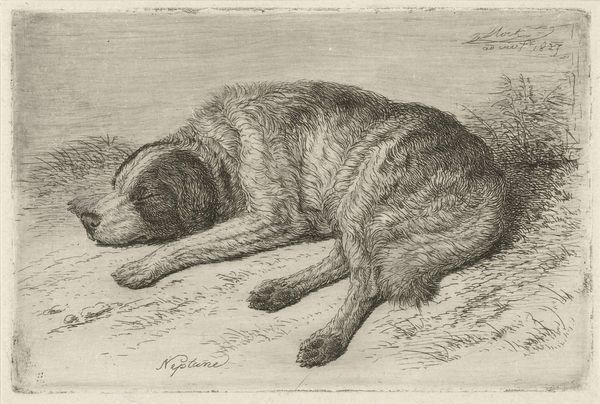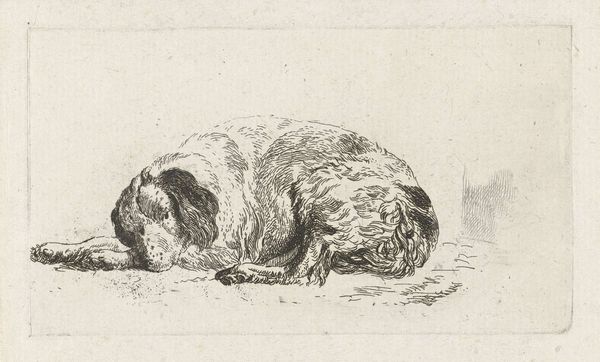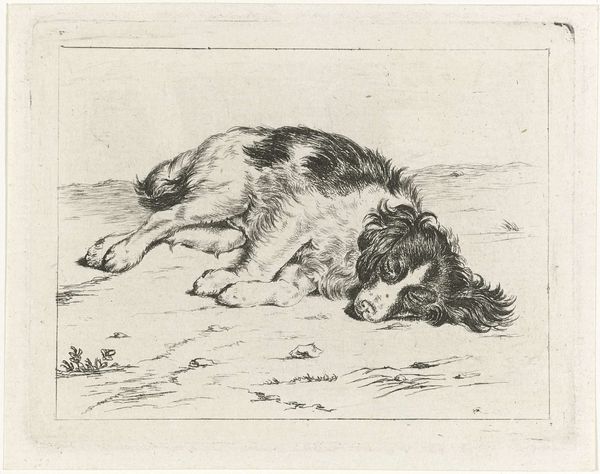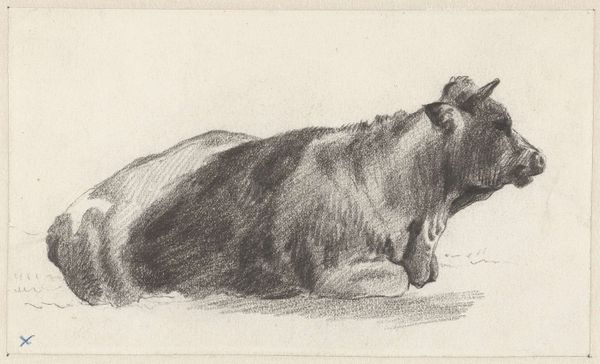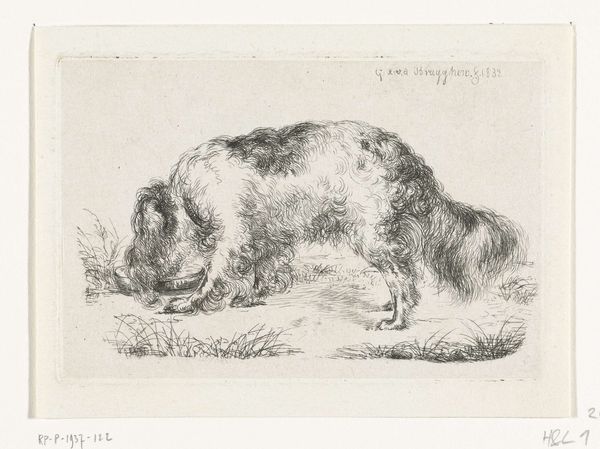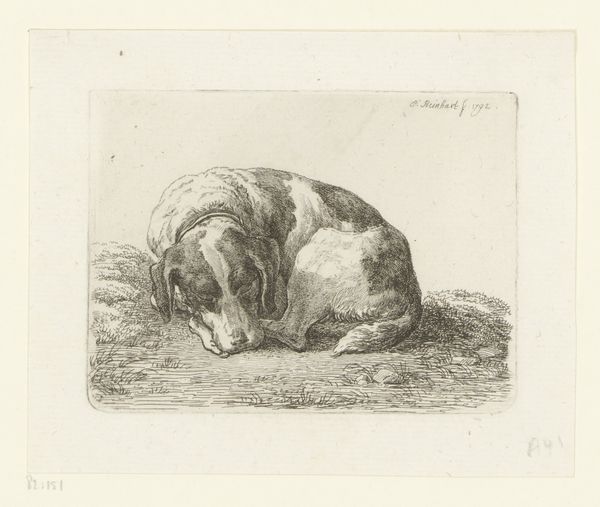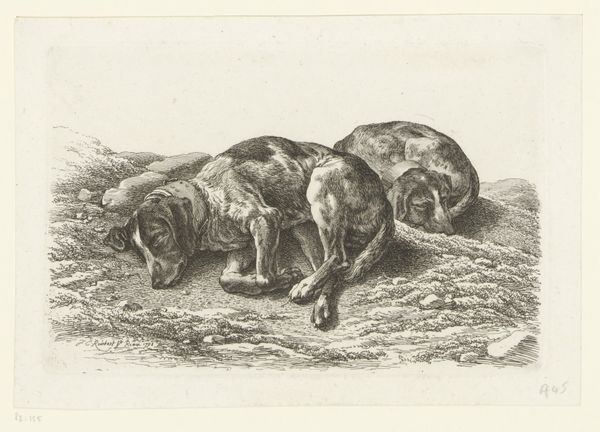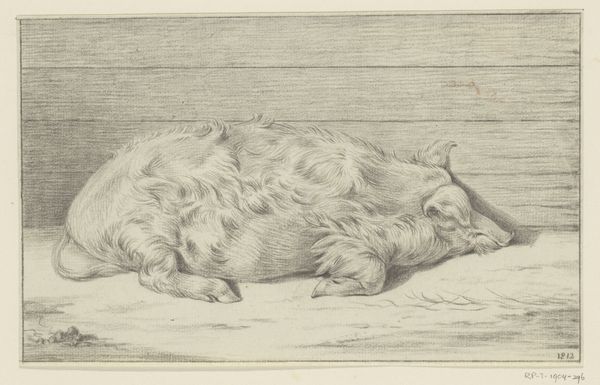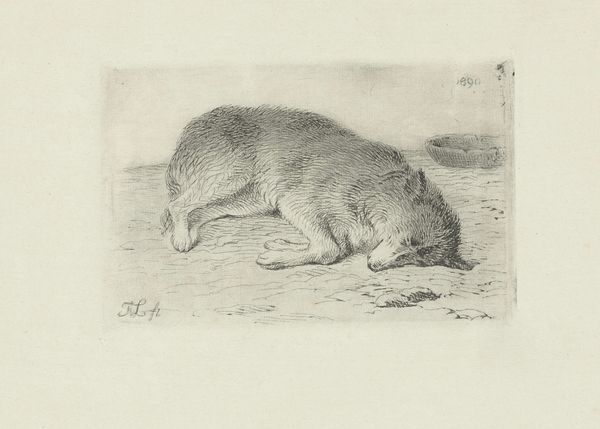
drawing, print, etching
#
drawing
#
animal
# print
#
pen sketch
#
etching
#
landscape
#
genre-painting
#
realism
Dimensions: height 87 mm, width 155 mm
Copyright: Rijks Museum: Open Domain
Curator: I’m struck by the vulnerable stillness of this sleeping dog. There's something very tender about it. Editor: This is "Slapende hond met kop rustend op voorpoten"—Sleeping Dog with Head Resting on Forepaws—an etching by Jan Dasveldt created sometime between 1780 and 1855. While ostensibly a genre painting, works like these tell us much about the shifting relationships between humans and animals during that period. The rise of sentimentalism deeply impacted these images. Curator: Absolutely, that tender depiction links to larger cultural currents. We see this sensitivity mirrored in other popular forms of imagery at the time. I see vulnerability but also trust. The way the dog lies exposed suggests a safe environment, reflecting back on a community that values domestic animals. Editor: Indeed. One can trace canine imagery throughout the 18th and 19th centuries to gauge societal attitudes. Consider how the shift in artistic portrayals of dogs from working animals to pampered pets reflected social hierarchies and economic shifts. This simple image also shows us what type of printing methods where favored at the time to promote certain social behaviours, Curator: Exactly! And the medium of etching allows for a wide distribution of such sentiment. Were these images collected as individual pieces or were they part of larger collections, printed series maybe, offering a glimpse into the lives of everyday people and animals? Editor: Given Dasveldt’s other works, I would imagine these prints found a space in albums or portfolios that showed pastoral settings with elements from the Dutch landscape. These became objects of sentimental contemplation, allowing the Dutch to observe the lives of their countrymen, their lives and animals. The dog itself seems to have no overt symbolic intention, though sleep is loaded symbol of the psyche. Curator: So interesting to consider its purpose as a potential conduit for emotion or for observing the class constructs of the era. It’s that push and pull between private emotion and public consumption. Editor: In observing these old etchings we come to value new outlooks of the Dutch during the late 1700's into the mid 1800's, who themselves must of grown affectionate of them, which we see reflected in the etching itself. Curator: A poignant reflection that resonates even today, almost three centuries later.
Comments
No comments
Be the first to comment and join the conversation on the ultimate creative platform.
